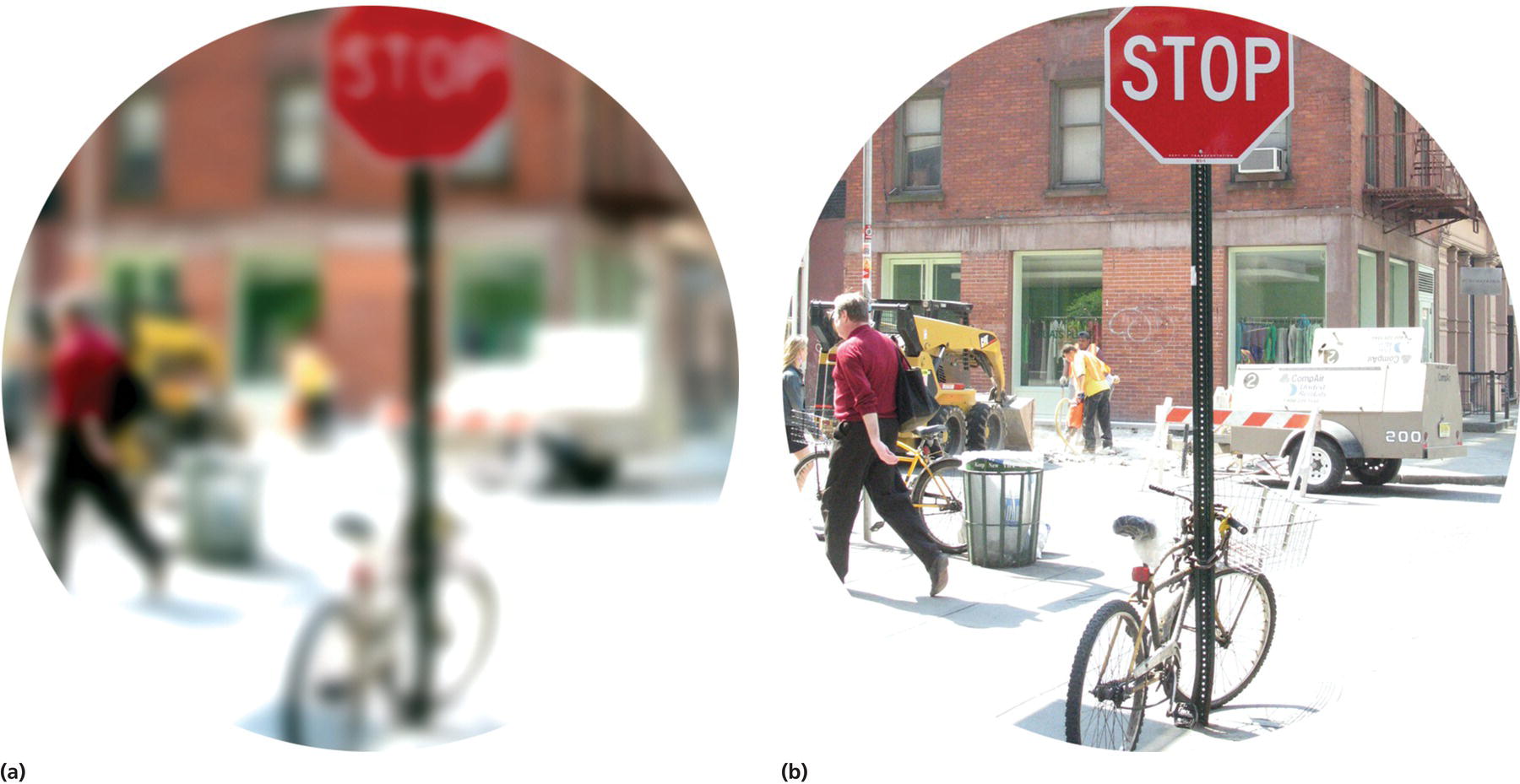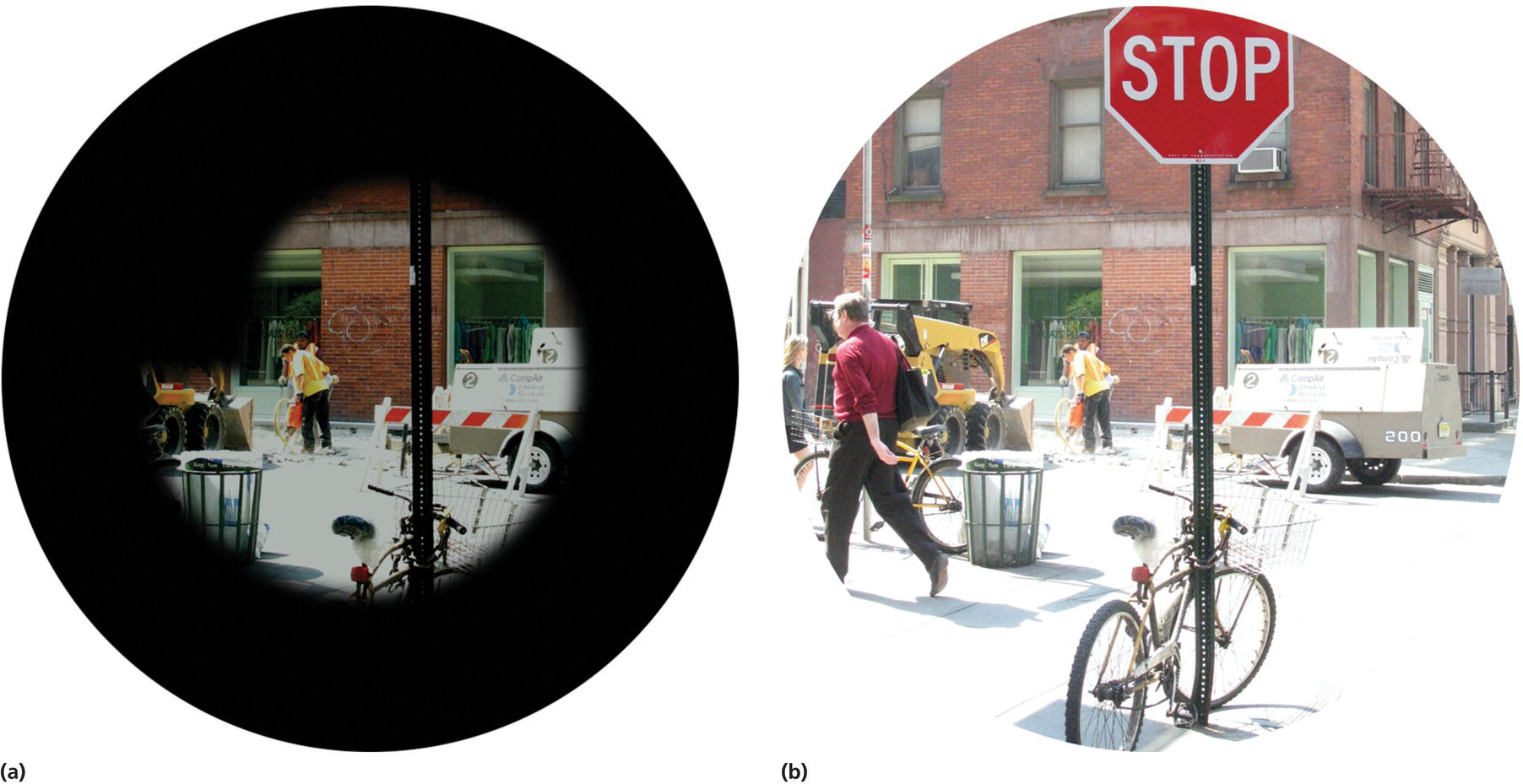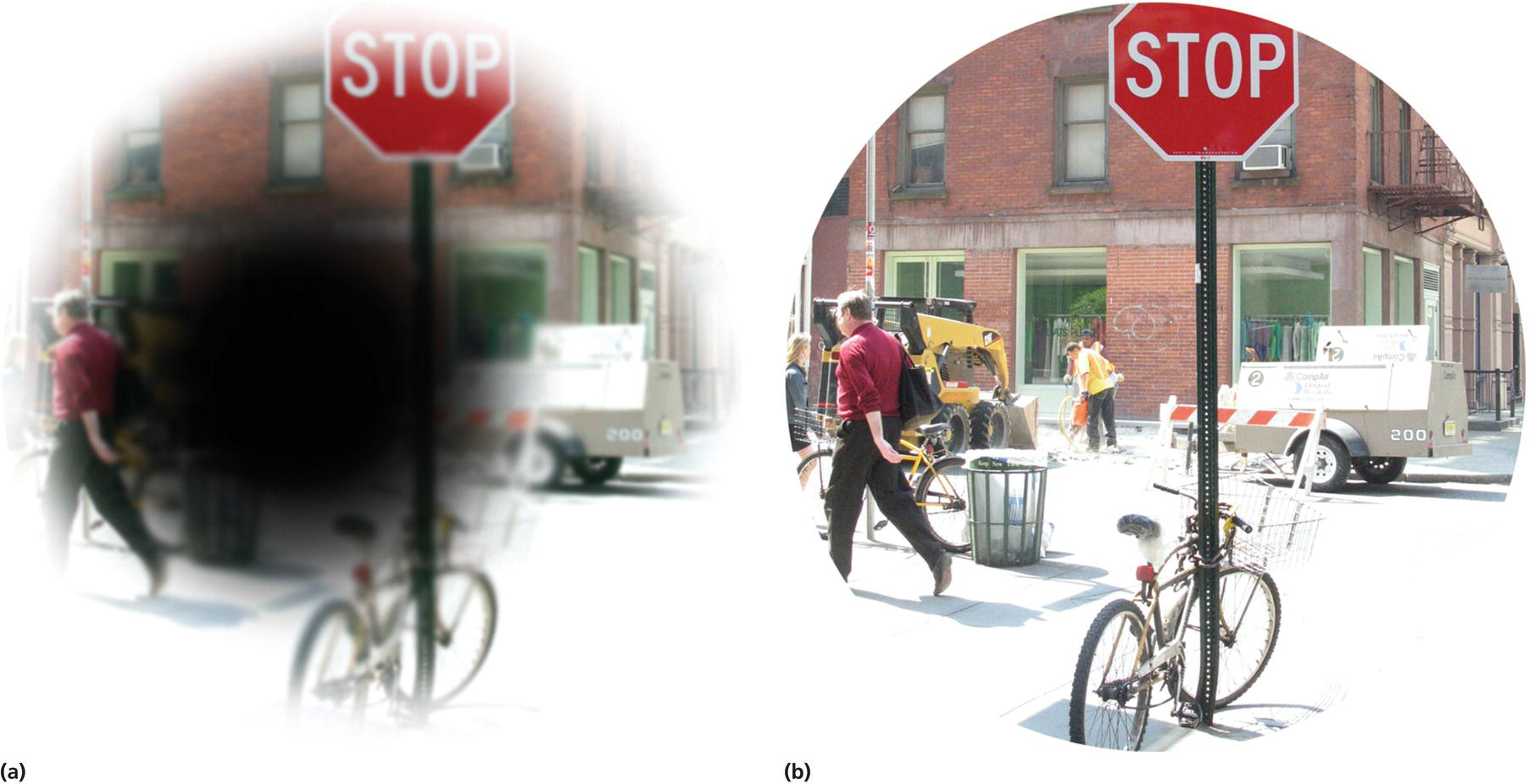Chapter 5
The Senior-Friendly Office
Ruth S. Goldblatt1 and Janet A. Yellowitz2
1 Department of Craniofacial Sciences, University of Connecticut, School of Dental Medicine, Farmington, CT, USA
2 Department of Periodontics, University of Maryland Dental School, Baltimore, MD, USA
Helen Keller is credited with noting that blindness cuts us off from things, but deafness cuts us off from people.
Introduction
As the population of older adults increases, dental practitioners will be challenged by having more older adults with impairments in their practice. A senior-friendly dental practice makes good business sense. Healthcare offices that accommodate the physical and emotional needs of a wide range of individuals demonstrate an awareness of patient concerns and safety issues. Having a good office design, utilizing appropriate lighting, and having appropriate seating help patients and staff negotiate the space with ease and confidence. Understanding that the “office” extends beyond the walls to include the lighting, the patient forms, and the building entrance, hallways, walkways, stairwells, and parking lot are important concepts when considering the patient’s comfort and overall experience.
The atmosphere that an office projects originates from its physical design and can affect the interactions of patients with staff and doctors. In this chapter we will provide design recommendations to aid in your interactions with and care of older adults. From the first telephone contact to the time when they pay their bill, there are multiple opportunities to enhance the communication and quality of experiences of everyone involved. Positive interactions lead to valued patient experiences and positive clinical outcomes.
From today to 2030, older adults will continue to dominate the growth of the population as 10 000 people turn 65 every day (Pew Research Center, 2010). With this ever-increasing population of older adults, ensuring that healthcare offices are accessible and user friendly to all ages makes sense from a business and safety perspective. A senior-friendly office can reduce patient and provider stress as well as ensuring an appropriate environment for all. Environments designed for older adults can be achieved with ease and without much fuss or expenditure, and perhaps most importantly, they are welcomed by all age groups.
As a result of age-related changes and the probability of having one or more chronic diseases, older adults are often challenged by their environment. The American with Disabilities Act (ADA) of 1990 requires healthcare facilities meet specific construction standards (Department of Justice, 2014). The 2010 ADA Standards set a minimum scope and technical requirements for newly designed and constructed or altered state and local government facilities, public accommodations, and commercial facilities. These facilities must be readily accessible to, and usable by, individuals with disabilities. The newly revised standards address all aspects of design, from restrooms to parking lot spaces (Department of Justice, 2010). Adoption of the 2010 Standards establishes a revised reference point for any planned construction or renovations. The referenced web site highlights the changes between the 1990 and 2010 standard (Department of Justice, 2011). The 2010 rule became effective on March 15, 2011 and by March 15, 2012, compliance with this Standards is required for new construction and alterations (Department of Justice, 2011). When planning major renovations to an office space consider using an architect familiar with designing healthcare spaces and the law to ensure the office is compliant, comfortable, and efficient for all.
Sensory impairments
Hearing loss and vision changes are frequent occurrences for older adults and can affect almost every interaction they have with professionals. Between 1999 and 2006, sensory impairments were identified as a significant issue for older adults, with one out of six Americans having impaired vision, and one out of four having impaired hearing (Dillon et al., 2010). Vision and hearing impairments increase with age, often doubling in those aged 80+ compared with persons aged 70–79. Addressing these issues through practice strategies and design modifications will enable your office to provide a user friendly and safe environment that allows patients to maintain their independence and self-esteem. Satisfied patients are return customers and are more likely to refer others to your practice.
By taking a closer look at some of these common issues it will be easier to understand the design suggestions.
Vision in older adults
Vision is defined as a combination of visual acuity, color sense, the ability to distinguish contrasts and the ability to evaluate the location of objects in the environment (Orr, 1998). Age-related eye diseases and vision loss are very common in older adults and often overlooked by individuals, caregivers, and healthcare providers. After age 40, age-related visual changes are almost universal, with a decline in the normal functions of the eyes and an increase in eye disorders. In 2008, 15% of males and 19.4% of females aged 65+ years, and 28% of those aged 85+ reported having trouble seeing (Federal Interagency Forum on Aging Related Statistics, 2010). The most common age-related eye diseases or conditions are presbyopia, cataracts, age-related macular degeneration (AMD), glaucoma, and diabetic retinopathy (National Eye Health Education, 2007). These and other conditions will be described and discussed later in this chapter. Visual impairments can be the result of a combination of diseases, that is a patient may have a combination of several conditions causing total vision loss. Visual impairments interfere with an individual’s ability to live independently – including, but not limited to, completing their daily activities such as dressing, effective oral care, and traveling to the dental office.
Since the incidence of vision loss increases with age, visual impairments are an increasing concern for those providing care to older adults. Due to age-related changes, attention to environmental conditions – such as having adequate lighting, eliminating glare from a shiny floor, and using color contrast – are significant issues that need to be addressed for improved visual functioning and comfort of older adults (Orr, 1998).
Although many age-related eye changes are correctable, visual acuity (sharpness of vision) often declines in older adults. The pupils of a 60 year old are about one third the size of a 20 year old, and react slower in response to rapid changes in light. With age, the lens becomes yellowed, less flexible, and slightly cloudy; the cornea flattens, becoming less sensitive to letting light into the eye. Additionally, there is decreased transparency of the lens, which reduces the ability of the eye to receive short wavelength colors such as blue and violet. The aged lens filters the blue out of the color spectrum, making it harder to differentiate between shades of blue, unique colors, and between colors with similar tone or value. As these changes occur slowly, most older adults are unaware that this is happening. Blues are usually the first colors to appear different to older adults, often looking greener, while warmer colors like reds and oranges appear stronger as compared to blues and greens. This change in vision may be the reason the clothes of some older adults do not match as they did when they were younger, or when patients present with stained or soiled clothing. Patients may not be aware that the clothes don’t match, are stained, or soiled.
As the result of having a decreased blood supply in the eye of older adults, the retina becomes less functional resulting in decreased spatial discrimination, black and white contrast challenges, and reduced flicker sensitivity. These changes impair one’s ability to tolerate glare and to adapt to sharp changes of light. A decline in accommodation also results as the lens hardens and there is a decrease in muscle tone. In general, older adults need more light to see than younger adults, and those aged 80+ require 10 times more light to read than the average 25 year old. One example of this change can be observed when older diners use small flashlights to read the menu in dimly lighted restaurants.
Presbyopia
Presbyopia, a common age-related eye change, is the result of a progressive change in the optic compartment, where the lens becomes less elastic. Presbyopia is the result of the eye’s decreasing capacity to focus at close range, or loss of accommodation. Presbyopia also affects one’s ability to read small print, see well in dim lighting, and to differentiate colors. Often times, individuals with presbyopia compensate for this visual loss by holding reading materials at a longer distance than usual; however, eventually, reading glasses or multifocal contact lenses or corrective surgery is needed. Because it occurs gradually over time, most individuals do not notice a visual loss until after age 40. By age 55, most people require corrective lenses or “readers” that magnify the visual field for reading or up-close work.
Reading is a joy of many older adults, but due to print size, lack of contrast, and the availability of adequate lighting, many have difficulty reading newspapers, magazines, and books. From a healthcare provider’s perspective, this challenge can impact the health of patients due to a decreased ability to read medication labels, follow home-care instructions, read the small print on your business card, or visualize oral hygiene. Even reading food labels and preparation instructions on packages can be challenging. This decrease or loss of vision can affect quality of life for the older adults in many ways.
Cataracts
Cataracts are a clouding or opacity of the lens of the eye, and can range from a small to a diffuse area. Cataracts develop slowly over time in all older adults. Like most age-related changes, cataracts are usually not treated until a severe decline has occurred. As cataracts develop, the opacity of the lens causes light to scatter resulting in decreased visual acuity . Colors appear faded, night vision is poor, and glare is often experienced from sunlight, streetlights, and headlights. Individuals with cataracts have difficulty seeing in low light levels. Because cataract changes are insidious (slow-onset), many people do not realize their visual loss until late in the cataracts’ development. There is no preventive strategy for cataracts, though once treated, individuals realize the level of loss they had experienced prior to the surgery. An example of vision affected by cataracts as compared to normal is shown in Fig. 5.1.

Figure 5.1 Example of vision affected by cataracts (a) as compared to normal (b).
Courtesy of Lighthouse International (2014).
Glaucoma
Glaucoma is a group of diseases wherein the optic nerve is damaged as a result of increased pressure resulting in a visual field loss (Fig. 5.2). It is a chronic, progressive, degenerative disease that is generally asymptomatic in its early stages. There are two main types of glaucoma, with 90% being open-angle or chronic glaucoma. Other causes of glaucoma include tumors, advanced cataracts, and inflammation. Glaucoma can occur rapidly; it can cause acute pain or it can be silent, and if not treated, glaucoma can cause permanent vision loss or even blindness (National Eye Institute, 2014c).

Figure 5.2 Example of vision affected by glaucoma (a) as compared to normal (b).
Courtesy of Lighthouse International (2014).
Diabetic retinopathy
Diabetic retinopathy is a common, vascular complication of diabetes, the result of damage to the blood vessels in the retina, often caused by poor blood glucose control (Fig. 5.3). Diabetic retinopathy damage can take several forms including proliferation of the blood vessels on the retina surface or can be due to a swelling and leaking of fluid from blood vessels. Although early treatment can prevent blindness, diabetic retinopathy often results in vision loss (National Eye Institute, 2014b).

Figure 5.3 Example of vision affected by diabetic retinopathy (a) as compared to normal (b).
Courtesy of Lighthouse International (2014).
Age-related macular degeneration
Age-related macular degeneration (AMD) is an incurable and progressive retinal disease that can occur in one or both eyes. It is associated with increasing age and is the leading cause of low vision, severe vision loss, and legal blindness for people aged 60+ in the USA (Vision Aware, 2012). As age increases, the prevalence of AMD increases, ranging from 10% for those aged 66–74 to 30% for those aged 75–85 (Maylahn et al., 2012).
Ninety percent of AMD is considered atrophic or dry, with the remainder identified as neovascular or wet. Individuals with AMD have a loss of clarity in the center of the visual field, lose contrast sensitivity and color perception. People with AMD attempt to compensate by using their peripheral vision, so that it appears that they are not looking at the person with whom they are speaking. AMD interferes with one’s ability to recognize faces, watch television, navigate stairs safely, read, drive, and perform daily tasks (Fig. 5.4) (National Eye Institute, 2014a). Like other age-related conditions, individuals with AMD can lose their independence and are challenged in all settings. Since AMD can progress rapidly, whenever you are suspicious that a patient is having AMD symptoms, a prompt referral to an ophthalmologist is highly recommended.

Figure 5.4 Example of vision affected by age-related macular degeneration (a) as compared to normal (b).
Courtesy of Lighthouse International (2014).
Hemianopia or hemianopsia
Hemianopia or hemianopsia develops as the result of trauma, tumor, or stroke. As a result of damage to the optic nerve pathway, a partial blindness results leading to what is termed a visual-field cut (Fig. 5.5). Individuals with hemianopsia may ignore the side of the mouth with the brain damage as they do not perceive its presence. This condition can lea/>
Stay updated, free dental videos. Join our Telegram channel

VIDEdental - Online dental courses


